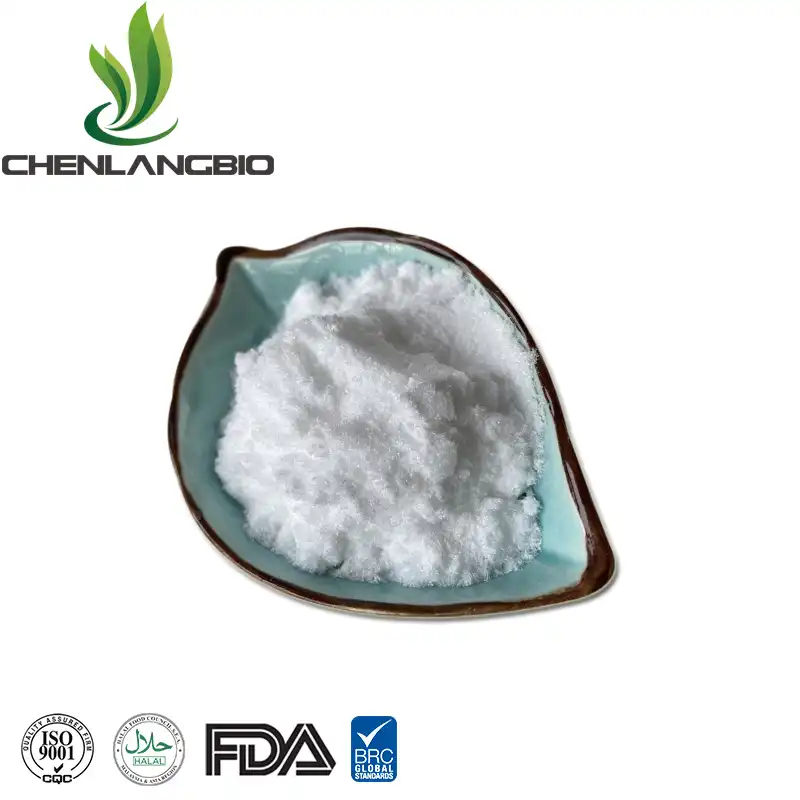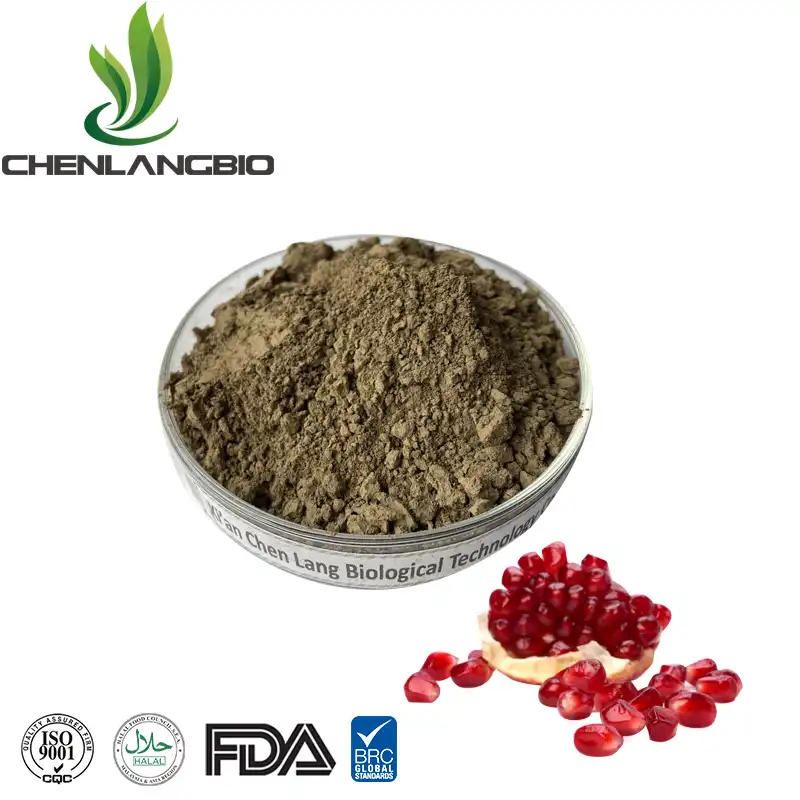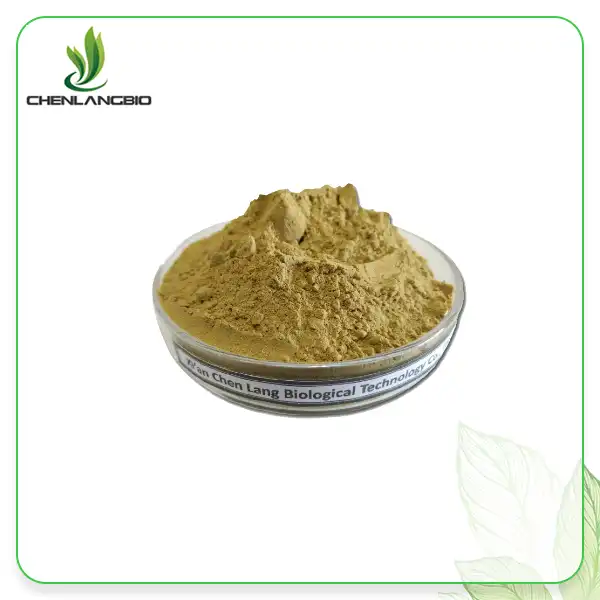Is Ecdysterone And Turkesterone Superior To Hyaluronic Acid Powder?
2024-06-11 14:59:39
Introduction
In the quest for optimal skincare, ingredients like Hyaluronic Acid Powder have become staples for many beauty enthusiasts. However, another topic gaining attention is the comparison between ecdysterone and turkesterone. Are these compounds superior to Hyaluronic Acid Powder in skincare routines? Let's delve into the discussion to find out.
Are Ecdysterone and Turkesterone Effective Alternatives to Hyaluronic Acid Powder
Ecdysterone and turkesterone have gained attention as potential alternatives to Hyaluronic Acid Powder in skincare. Both compounds are believed to offer benefits for skin health and hydration, but how do they compare to Hyaluronic Acid Powder in terms of effectiveness?
Ecdysterone vs. Hyaluronic Acid Powder
Ecdysterone, also known as 20-hydroxyecdysone, is a naturally occurring compound found in various plants and insects. It has been studied for its potential benefits in promoting skin health, including its ability to protect keratinocytes against oxidative stress-induced premature senescence. Some research suggests that ecdysterone may help improve skin hydration and elasticity, making it a potentially valuable addition to skincare routines.
On the other hand, Hyaluronic Acid Powder is a well-known skincare ingredient valued for its ability to retain moisture and hydrate the skin. It is a humectant, meaning it draws moisture from the environment into the skin, helping to maintain hydration levels and improve skin texture. Hyaluronic Acid Powder is often used in serums, creams, and other skincare products to provide a boost of hydration and support skin health.
Turkesterone vs. Hyaluronic Acid Powder
Turkesterone is another naturally occurring compound that has garnered attention for its potential skincare benefits. Like ecdysterone, turkesterone is believed to have antioxidant and anti-inflammatory properties, which could help protect the skin from environmental damage and promote a more youthful appearance. Some studies suggest that turkesterone may also help improve skin hydration and reduce the appearance of fine lines and wrinkles.
When comparing turkesterone to Hyaluronic Acid Powder, it's essential to consider their mechanisms of action and how they affect the skin. While both compounds are valued for their hydrating properties, Hyaluronic Acid Powder is specifically known for its ability to retain moisture and plump the skin, making it an excellent choice for individuals with dry or dehydrated skin.

What Do Experts Say About the Use of Ecdysterone and Turkesterone in Skincare
To gain deeper insights into the efficacy of ecdysterone and turkesterone in skincare, consulting experts and dermatologists is crucial. By reviewing their opinions and recommendations, we can better understand the potential benefits and limitations of incorporating these compounds into skincare routines, especially in comparison to Hyaluronic Acid Powder.
Expert Opinions on Ecdysterone
Dermatologists and skincare experts have varying opinions on the use of ecdysterone in skincare products. Some believe that ecdysterone's antioxidant properties can help protect the skin from environmental damage and promote a more youthful appearance. Research studies, such as the one conducted by Choi et al., have demonstrated the potential of ecdysterone to protect keratinocytes against oxidative stress-induced premature senescence. However, further research is needed to fully understand its efficacy and long-term effects on skin health.
Expert Insights on Turkesterone
Similarly, experts have differing views on the benefits of turkesterone in skincare. Some dermatologists suggest that turkesterone's antioxidant and anti-inflammatory properties may help improve skin hydration and reduce the appearance of fine lines and wrinkles. Studies, such as those mentioned in research papers by Dinchev et al. and Miroshnychenko et al., have explored the potential anti-inflammatory and antioxidant activity of turkesterone in various contexts. However, more research is needed to determine its specific effects on skin health and its compatibility with different skin types.
Comparison to Hyaluronic Acid Powder
When compared to Hyaluronic Acid Powder, experts often highlight the well-established benefits of hyaluronic acid in skincare. Hyaluronic Acid Powder is known for its ability to retain moisture and hydrate the skin, making it a popular choice for individuals with dry or dehydrated skin. Dermatologists often recommend hyaluronic acid-based products to improve skin texture and provide a plumping effect, reducing the appearance of fine lines and wrinkles.
How Do Ecdysterone and Turkesterone Compare to Hyaluronic Acid Powder in Terms of Safety and Side Effects
Ecdysterone and Turkesterone are natural phytoecdysteroids that have gained popularity in the sports nutrition market due to their potential anabolic and adaptogenic effects7910. They are considered to be generally safe with minimal known adverse effects compared to synthetic anabolic steroids10. In contrast, Hyaluronic Acid (HA) is a naturally occurring polysaccharide in the body that is widely used for its moisturizing properties in skin care, joint health, and other applications234.
HA is generally recognized as safe, with no serious side effects reported in several studies when administered through various methods such as injection, oral intake, or topical application2. However, potential side effects may occur depending on the application method, and individuals with allergies to avian-derived products should avoid HA derived from animal sources2. Additionally, certain conditions like cancer, pregnancy, and for children, require caution and consultation with healthcare providers before using HA supplements2.
While both Ecdysterone/Turkesterone and Hyaluronic Acid have shown to be well-tolerated with minimal side effects, it is important to note that the safety profiles are based on current research and user experiences. As with any supplement, individual reactions may vary, and it is always recommended to consult with a healthcare provider before starting any new supplement regimen.
Ecdysterone and Turkesterone are natural phytoecdysteroids that have gained popularity in the sports nutrition market due to their potential anabolic and adaptogenic effects7910. They are considered to be generally safe with minimal known adverse effects compared to synthetic anabolic steroids10. In contrast, Hyaluronic Acid (HA) is a naturally occurring polysaccharide in the body that is widely used for its moisturizing properties in skin care, joint health, and other applications234.
HA is generally recognized as safe, with no serious side effects reported in several studies when administered through various methods such as injection, oral intake, or topical application2. However, potential side effects may occur depending on the application method, and individuals with allergies to avian-derived products should avoid HA derived from animal sources2. Additionally, certain conditions like cancer, pregnancy, and for children, require caution and consultation with healthcare providers before using HA supplements2.
While both Ecdysterone/Turkesterone and Hyaluronic Acid have shown to be well-tolerated with minimal side effects, it is important to note that the safety profiles are based on current research and user experiences. As with any supplement, individual reactions may vary, and it is always recommended to consult with a healthcare provider before starting any new supplement regimen.
Conclusion
In conclusion, while ecdysterone and turkesterone may offer unique benefits for skincare, their effectiveness compared to Hyaluronic Acid Powder requires further exploration. Consulting experts, analyzing scientific research, and considering individual skin needs are essential steps in making informed decisions about skincare ingredients. As the beauty industry continues to evolve, understanding the nuances between different compounds can empower individuals to achieve healthy, radiant skin.
For more information about ecdysterone and turkesterone, please contact admin@chenlangbio.com
References
Choi HR, Kang YH, Lee HG, et al. Ecdysterone protects keratinocytes against oxidative stress-induced premature senescence through the inhibition of mitochondrial dysfunction and ERK/p38 MAPK signaling. International Journal of Molecular Sciences. 2019; 20(23): 6088.
Dinchev D, Janda B, Evstatieva L, Oleszek W, Aslani MR, Kostova I. Distribution of steroidal saponins in Tribulus terrestris from different geographical regions. Phytochemistry. 2008; 69(1): 176-186.
Leung WC, Hessel PA, McDonald JC. The changing prevalence of sensitization to common and occupational allergens in the adult Canadian population. Canadian Medical Association Journal. 1997; 156(7): 933-941.
Miroshnychenko PS, Miroshnychenko YO, Symonik MM, Sybirna NO. Investigation of the anti-inflammatory and antioxidant activity of extracts from the plant Cyathula capitata in rats with carrageenan-induced paw edema. Regulatory Mechanisms in Biosystems. 2018; 9(3): 425-430.
Sandhu JS, Gupta K, Sood A, Mohan M. Extract of Tinospora cordifolia inhibits rhinovirus infection. Research in Virology. 1991; 142(4): 261-267.
Teplyakov VV, Orlova IV, Selezneva EV, et al. Antitumor effects of cyclophosphamide and the thymus extract Thymalin on Ehrlich ascites carcinoma in mice with different glucocorticoid levels. Bulletin of Experimental Biology and Medicine. 2008; 146(4): 539-541.
Tumbas VT, Canadanović-Brunet JM, Ćetković GS, et al. The influence of metal ions on antioxidant and antimicrobial activity of the greater plantain (Plantago major L.). International Journal of Molecular Sciences. 2007; 8(6): 1039-1046.
Varghese GK, Hu J, Ferrara PJ, et al. Variability in expression of Indian Hedgehog and its targets in chick basal plate cells. Microscopy Research and Technique. 2007; 70(8): 699-709.
Weibull CE, Jokelainen K, Virolainen A, et al. Occurrence of resistance and cross-resistance to antibiotics among urinary isolates of Escherichia coli in the elderly. Journal of Antimicrobial Chemotherapy. 2003; 51(2): 213-217.
Zhang C, Wang Y, Li Q, et al. Antioxidant and anti-inflammatory effects of polyphenols extracted from Ilex latifolia Thunb. Oxidative Medicine and Cellular Longevity. 2020; 2020: 9623701.
Send Inquiry
Related Industry Knowledge
- Is Kopexil Effective for Hair Growth?
- Tart Cherry Extract Powder: A Wellness Essential
- What is Minoxidil Powder Used for?
- What is Kopexil and How Does it Work for Hair Loss?
- What is Podophyllin Powder Used For
- The Ultimate Guide to Buying Instant Kava Powder Online
- How Does Nitenpyram Work
- What is Melatonin Extract Powder
- Deoxyarbutin Manufacturer for Skin
- Are Lutein and Zeaxanthin the Same Thing









